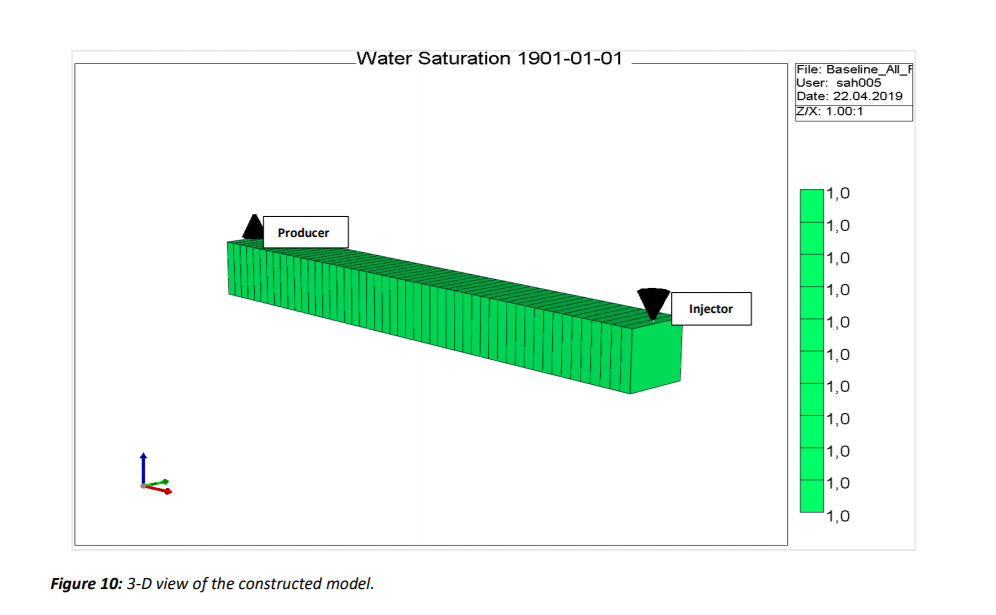Simulation of Nanoparticle-Stabilized CO2-Foam in Sandstone
砂岩储层纳米颗粒稳定二氧化碳泡沫数值模拟
Summary
The numerical study presented in this thesis is a part of an ongoing CO2-foam project led by the Reservoir Physics group at the Department of Physics and Technology, University of Bergen. The thesis objective was to investigate foam behavior during co-injection of CO2-brine (baseline) and CO2- nanofluid using a compositional simulator validated by history matching the experimental results. The compositional simulator GEM provided by The Computer Modelling Group (CMG) was used to perform history matching and sensitivity analysis to investigate how different foam model parameters, including the reference mobility reduction factor (FMMOB), the maximum dry-out parameter (Sfdry), the dry-out slope (Sfbet), absolute permeability, and injection velocity influence foam strength during CO2 coinjection with and without nanoparticle present.
This thesis focuses on the numerical simulation of CO2-foam, that involves the foam quality scan of nanoparticles and CO2 to generate foam for mobility control, and to investigate the foam strength of the nanoparticle-based foam. The numerical simulations were compared with available experimental data from core floods on outcrop Bentheimer sandstone core. The core was fully saturated with brine (no oil) and gas was coinjected with brine and/or nanofluid at different injection rates and gas fractions to generate foam in-situ.
An empirical foam model incorporated in the compositional equation-of-state CMG-GEM simulator was utilized. The model included relative permeability and foam model parameters, such as the reference mobility reduction factor (FMMOB), the maximum dry-out parameter (Sfdry) and the dryout slope (Sfbet). In the experimental work, the maximum apparent viscosity of 7.8 cP was achieved at the optimal gas fraction (fg = 0.7), whereas, for baseline foam quality scans (without nanoparticles), the apparent viscosity was almost 3 times lower at the same gas fraction for all injection velocities. This indicated foam generation and that nanoparticles were able to stabilize CO2 foam. The model was capable of reproducing the experimental data with emphasis on the optimal gas fraction, and the apparent viscosity increased to a maximum value (7.7 cP) at the optimal gas fraction for all injection velocities. A near-Newtonian behavior of CO2-foam was observed both in the experimental data and in the numerical simulations; no shear-thickening behavior (fluid viscosity increases with increasing injection rate) or shear-thinning behavior (fluid viscosity decreases with increasing injection rate) was observed during the foam scanning. The model saturation profiles indicated the foam was generated from CO2-NP was displacing more water compared to the baseline.
In conclusion, this work provides a methodology for estimating relative permeability and foam model parameters for nanoparticle-stabilized CO2-foam simulation. The findings will be useful for understanding nanoparticle-stabilized CO2-foam behavior during foam scanning with and without nanoparticles present. Simulation results showed that the foam apparent viscosity increased during the foam quality scans with nanoparticles present compared to foam quality scans with brine. It was observed that foam model parameters affect water saturation, differential pressure, and apparent viscosity. Finally, simulations revealed that simulation results were in good agreement with experimental data and that nanoparticle-stabilized CO2-foam has the potential to become a promising method for CO2 mobility control.


